Cinematography is the art and science of motion picture photography. It involves aspects such as lighting, camera angles, lens choices, and film techniques. These elements work in unison to create a visual narrative that enhances the story’s emotional impact. In this comprehensive guide, we will delve into the realm of cinematic techniques, exploring the various camera angles in film, the influence of cinematography on a scene, the impact of lens choices, and the role of post-production.
Table of Contents
The Foundation of Cinematic Techniques
Cinematic techniques are the methods employed by filmmakers to convey meaning, mood, and narrative in film. These methods encompass a wide range of practices, from camera filming techniques, lighting, sound, to editing. All these elements work together harmoniously to create a cohesive and compelling story.
Basic Elements of Cinematography
There are three fundamental elements in cinematography: the shot, the scene, and the sequence.
- The Shot: This is the most basic unit of a film and involves a single view that the camera captures. The shot can be manipulated with different camera angles, movements, and lighting to evoke specific emotions or convey certain meanings.
- The Scene: A scene is a series of shots that take place in a single location and time frame. It usually involves an action or a conversation, and it’s an essential building block in the narrative structure of a film.
- The Sequence: A sequence is a series of scenes that collectively communicate a larger narrative arc. A sequence can span various locations and times but always maintains a thematic or narrative continuity.
The Influence of Cinematography on a Scene
Cinematography significantly impacts how a scene is perceived and interpreted by the audience. It can enhance the narrative, amplify emotions, and provide critical visual information that allows the viewers to understand the story better. By manipulating lighting, camera angles, and movement, cinematographers can guide the audience’s attention, create a specific mood, and influence the interpretation of the scene.
Cinematography and Lens Choices
Lens choice is a key decision in cinematography as it directly affects the aesthetics and emotional impact of each shot. Different types of lenses, such as wide-angle, telephoto, or anamorphic lenses, offer varying field of views, depth of field, and distortions. These properties can be used creatively to enhance the storytelling, shape the audience’s perception, and create a unique visual style.
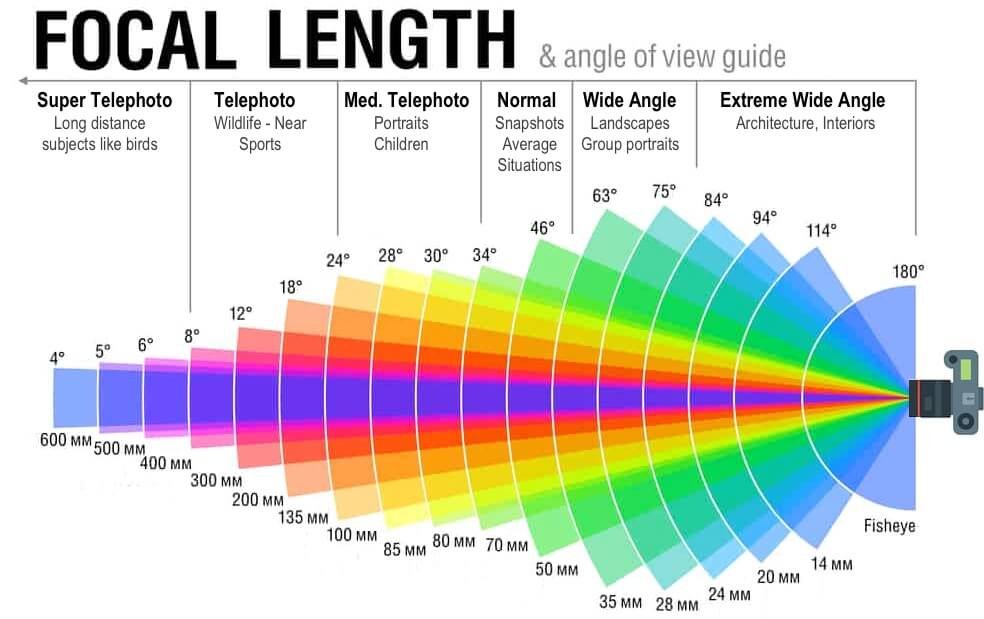
Ten Basic Cinematography and Film Techniques
Filmmaking involves a multitude of techniques that contribute to the overall visual storytelling. Here are ten basic film techniques that every aspiring filmmaker should know:
Camera Angles
Camera angles are a powerful tool in visual storytelling. By changing the angle of the camera, filmmakers can influence the audience’s perception of a scene or a character. Here are some of the most common camera angles in film:
- High Angle: The camera looks down at the subject, often making them appear vulnerable or insignificant.
- Low Angle: The camera looks up at the subject, making them appear dominant or powerful.
- Eye-Level: This is the most natural camera angle as it mimics how we perceive the world in reality. It’s often used to create a neutral or objective perspective.
- Bird’s Eye View: This is an overhead shot that provides a comprehensive view of the scene. It’s often used in establishing shots to set up the location or the spatial relationship between characters.
- Dutch Angle: Also known as a canted angle, this involves tilting the camera to create a sense of disorientation, tension, or instability.
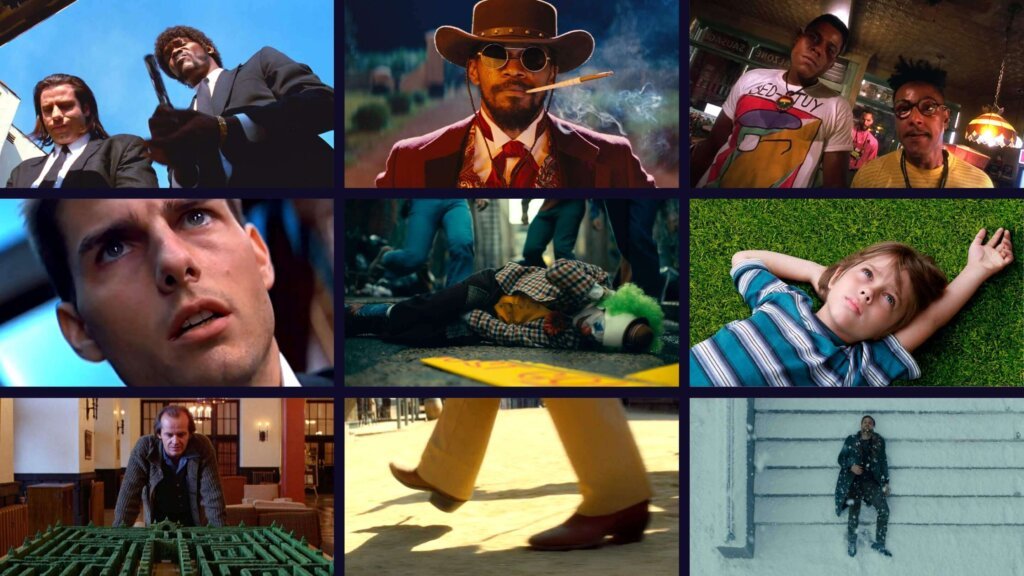
Camera Movements
Camera movements can add dynamism to a scene, guide the viewer’s attention, and enhance the narrative flow. Here are some common camera filming techniques:
- Pan: The camera pivots from left to right or vice versa, capturing a panoramic view of the scene.
- Tilt: The camera moves up and down, often used to reveal vertical elements in a scene.
- Dolly/Tracking Shot: The camera moves along with the subject, either on a dolly or a handheld stabilizer. This creates a sense of immersion and continuity.
- Crane Shot: The camera moves vertically, providing a bird’s eye view or a high-angle shot of the scene.
- Zoom: The camera’s lens is adjusted to move closer or further from the subject. This can be used to reveal details, create tension, or shift focus.
Lighting
Lighting is one of the most crucial aspects of cinematography as it significantly contributes to the mood, atmosphere, and visual style of a film. Here are some basic lighting techniques:
- Three-Point Lighting: This is the standard lighting setup involving a key light, fill light, and backlight. It provides a balanced illumination and creates depth in the image.
- High-Key Lighting: This technique uses a high intensity of light to minimize shadows and create a bright, cheerful mood.
- Low-Key Lighting: This technique emphasizes shadows and contrast, often used to create a dramatic, mysterious, or suspenseful atmosphere.
Framing and Composition
Framing and composition involve arranging visual elements within the camera frame to create a balanced, aesthetically pleasing image. Here are some key concepts:
- Rule of Thirds: This is a guideline that divides the frame into nine equal parts using two horizontal and two vertical lines. Placing subjects along these lines or at their intersections can create a more balanced and engaging composition.
- Leading Lines: These are lines within a scene that lead the viewer’s eye towards the main subject. They can be used to guide attention, create depth, or imply movement.
- Depth of Field: This is the range within a scene that appears sharp and in focus. Manipulating depth of field can direct attention, create separation between subjects, and contribute to the mood of the scene.
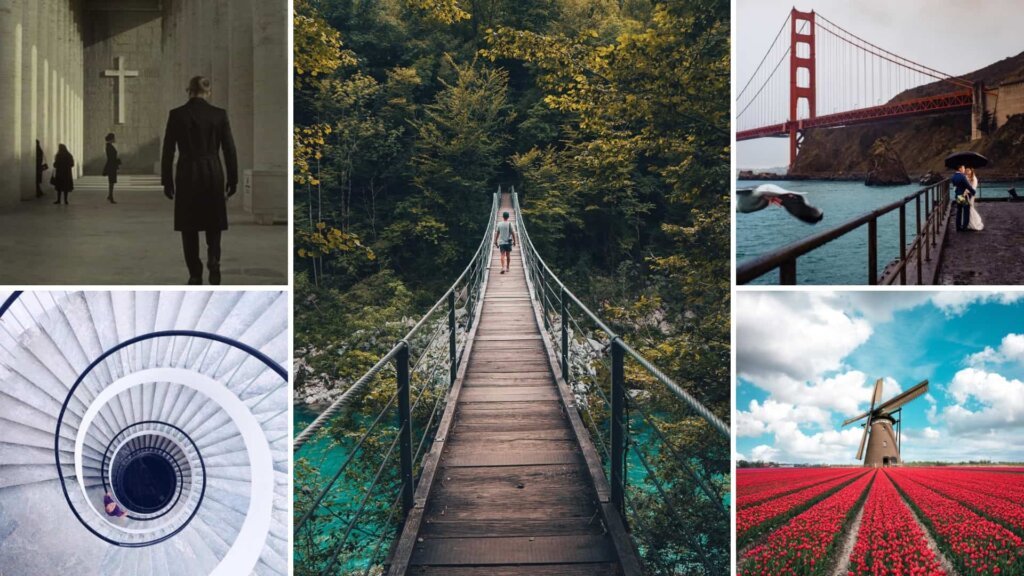
Sound
Sound in film can significantly enhance the storytelling by creating mood, conveying emotions, and providing critical narrative information. Here are some important sound techniques:
- Diegetic Sound: These are sounds that originate within the world of the film, such as dialogue, environmental sounds, and sound effects.
- Non-Diegetic Sound: These are sounds that are added in post-production and are not heard by the characters, such as background music, voice-over, and sound effects for dramatic impact.
Editing
Editing is the process of assembling various shots into a coherent sequence. It plays a crucial role in pacing, continuity, and narrative structure. Here are some basic editing techniques:
- Cut: This is the simplest form of transition where one shot instantly changes to another.
- Fade: This is a transition where a shot gradually fades to black (fade out) or from black (fade in). It’s often used to indicate the passing of time or a change in location.
- Dissolve: This is a transition where one shot gradually blends into the next. It can create a soft, dream-like effect or suggest a connection between two separate scenes.
- Montage: This is a sequence of brief shots compiled to condense time, convey information, or create an emotional impact.
Color Grading
Color grading is the process of adjusting the colors and tones in a film to create a specific look or mood. It can greatly enhance the visual aesthetics, guide the viewer’s emotional response, and aid in visual storytelling.
Visual Effects (VFX)
Visual effects are digitally created or enhanced visuals that are added in post-production. They can be used to create realistic or fantastical elements, enhance visual impact, or solve practical filming challenges.
Mise-en-Scène
Mise-en-scène refers to everything that appears in the frame and its arrangement—props, lighting, actors, costumes, and set décor. It contributes to the visual theme and helps tell the story by visually representing the film’s narrative and thematic concerns.
Production Design
Production design involves creating the physical environment in which a film takes place. It includes set design, location scouting, costume design, and prop selection. A well-designed production can significantly enhance the believability of the film world and contribute to the overall visual storytelling.
Cinematic Techniques In Action: Case Studies
Each film employs a unique combination of cinematic techniques to create its distinctive visual style and narrative. Let’s take a look at how some renowned films have used these techniques to their advantage.
Camera Angles in “The Dark Knight”
In Christopher Nolan’s “The Dark Knight,” the use of camera angles is instrumental in conveying character dynamics and narrative tension. For instance, low angle shots are often used to portray Batman as a towering, powerful figure. On the other hand, high angle shots are employed to convey the vulnerability and desperation of the victims.
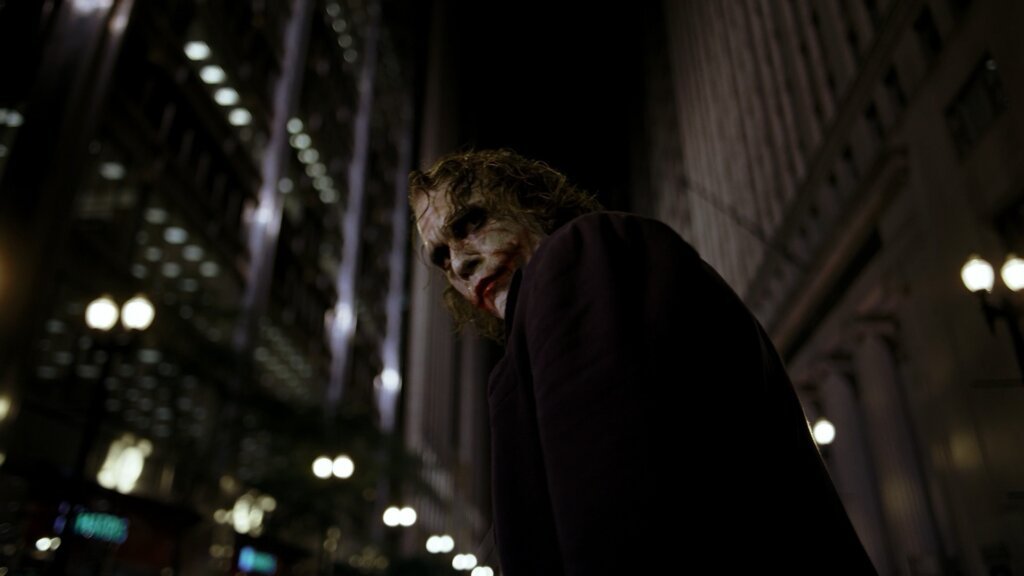
Cinematic Techniques in “Inception”
“Inception,” another Christopher Nolan masterpiece, showcases an array of advanced cinematic techniques. The film uses innovative camera movements, such as rotating and tilting, to depict the manipulation of dream landscapes. It also employs cross-cutting to build suspense and illustrate the simultaneous unfolding of events in different dream levels.
Cinematography Shots in “Birdman”
“Birdman,” directed by Alejandro González Iñárritu, is renowned for its illusion of being filmed in a single continuous shot. This was achieved through meticulous planning and expert use of tracking shots, steadicam, and seamless editing. This unique approach enhances the film’s immersive quality and narrative continuity.
Camera Filming Techniques in “The Grand Budapest Hotel”
Wes Anderson’s “The Grand Budapest Hotel” is known for its distinctive visual style, characterized by symmetrical compositions, vibrant color palettes, and meticulous production design. Anderson’s signature filming technique is the use of static, perfectly centered shots that create a unique, tableau-like aesthetic.

Film Technique in “La La Land”
“La La Land,” directed by Damien Chazelle, employs a variety of film techniques to evoke the classic Hollywood musicals. The film features long, choreographed tracking shots, vibrant color grading, and dramatic lighting, creating a stylized, dream-like atmosphere that complements its romantic narrative.
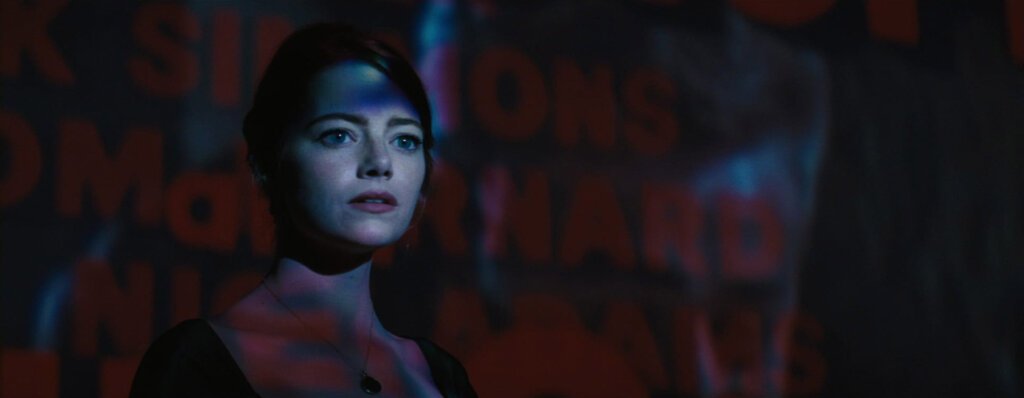
Cinematography’s Influence On Post Production
The choices made during the filming process significantly influence the post-production stage. For instance, the camera type and lens used can determine the resolution and aspect ratio of the footage, impacting the editing and grading process. Similarly, the lighting and color scheme set during production can guide the color grading in post-production, ensuring a consistent visual style.
Moreover, the use of practical effects and in-camera techniques can reduce the need for extensive visual effects work in post-production. On the other hand, films that rely heavily on CGI may require more time and resources during post-production to create and integrate the digital elements.
Cinematic techniques are the essence of filmmaking. They are the tools that filmmakers use to craft their visual stories, elicit emotional responses, and convey their unique artistic vision. Understanding these techniques is crucial for anyone aspiring to create or analyze films. From camera angles and lens choices to lighting and editing, each technique contributes to the overall cinematic experience, shaping the way we perceive and interpret the film. So, the next time you watch a film, take a moment to appreciate the artistry behind these techniques and the storytelling magic they create.
How many camera techniques are there?
There are numerous camera techniques available to filmmakers and photographers, each serving a unique purpose in storytelling. Some of the most common ones include pan, tilt, zoom, tracking, dolly, crane, aerial, steady cam, and handheld shots. There are also techniques like close-ups, long shots, wide-angle shots, and extreme wide shots. Moreover, there are different framing and composition techniques such as rule of thirds, leading lines, and symmetry. In post-production, techniques like slow motion, time-lapse, and reverse motion can be applied. The number of techniques is vast and often evolving with technology and creative innovation.
What do camera techniques do?
Camera techniques play a pivotal role in both filmmaking and photography, serving as essential tools to convey narratives, evoke emotions, and guide the viewer’s perspective. Techniques like pan, tilt, zoom, and tracking shots manipulate the camera’s movement to reveal details, create suspense, or follow action. Techniques such as close-ups, long shots, and wide-angle shots can emphasize a subject’s importance or depict a scene’s context.
Framing techniques like the rule of thirds, leading lines, and symmetry help compose visually pleasing and meaningful images. Techniques like slow motion, time-lapse, and reverse motion, applied in post-production, can alter the perception of time and pace, adding layers of interpretation to the narrative.
In essence, camera techniques are the language of visual storytelling. They dictate how a story unfolds visually, allowing the creator to communicate their vision effectively. The choice and combination of these techniques can significantly impact the viewer’s experience and interpretation of the visual content.
Why are camera techniques important?
Camera techniques are indispensable to visual storytelling in filmmaking and photography. They serve as the vocabulary and grammar of a visual language, enabling creators to convey narratives, guide viewer perspective, and evoke emotional responses. Techniques like panning, tilting, or zooming manipulate the camera’s movement, directing the viewer’s attention and creating dynamic scenes. Shot types, such as close-ups or wide-angles, emphasize subjects or provide context, enhancing viewer understanding and engagement. Framing techniques, including the rule of thirds or leading lines, help to compose visually harmonious and engaging images. Post-production techniques like slow motion or reverse motion can alter the perception of time and pace, adding depth to the storytelling. Without effective use of these techniques, visual content may fail to communicate the intended message or emotion, diminishing the overall viewer experience. Hence, mastering camera techniques is crucial for any visual content creator.
What is the most important thing in camera?
The most important aspect of a camera is arguably its lens. The lens is responsible for focusing light from the scene onto the image sensor, which in turn captures and documents the image. The lens determines the clarity, sharpness, and depth of the photo, and contributes significantly to the overall image quality. Different types of lenses, such as wide-angle, telephoto, or macro, can significantly alter the look and feel of the picture, allowing photographers to manipulate perspective, depth of field, and zoom level to achieve their desired effect. Therefore, investing in high-quality lenses and understanding their uses and limitations can greatly enhance your photography experience. However, it’s important to note that while the lens is crucial, other factors like sensor size, shutter speed, ISO settings, and the photographer’s skill and creativity also play a significant role in capturing great photos.